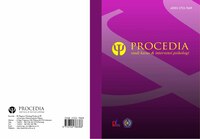Solution focused therapy untuk memperbaiki pola komunikasi suami-istri
DOI:
https://doi.org/10.22219/procedia.v11i1.24451Abstract
Ineffective communication within a family is a problem that often occurs and requires immediate treatment so as not to cause more severe problems. The lack of effective communication in this family was initially complained about by the wife, who complained about the changes in behavior experienced by her husband since he started working. Changes in behavior around being reluctant to communicate his disapproval and acting indifferent to his wife's feelings make him feel uncomfortable. This non-assertive behavior forms an indirect or indirect communication pattern that results in disharmony in household relations. Observation, interviews, and the Couple Communication Satisfaction Scale (CCSS) are the assessments carried out to explore the problem. The intervention used is solution-focused therapy (SFT); the implementation procedure consists of 6 sessions to improve communication patterns between husband and wife. SFT is proven to be able to improve communication patterns that exist between husband and wife. These changes in more positive communication between couples mean that interactions within the family are better than before and that family members are spending more time together than before.
Keyword : Solution-focused therapy, communication, couple communication satisfaction
Abstrak
Komunikasi yang tidak efektif dalam keluarga merupakan masalah yang sering terjadi dan memerlukan penanganan segera agar tidak menimbulkan masalah yang lebih berat. Kurangnya komunikasi yang efektif dalam keluarga ini awalnya dikeluhkan oleh istri yang mengeluhkan perubahan perilaku yang dialami suaminya sejak mulai bekerja. Perubahan perilaku seputar keengganan untuk mengomunikasikan ketidaksetujuannya dan bersikap acuh tak acuh terhadap perasaan istrinya membuatnya merasa tidak nyaman. Perilaku tidak asertif ini membentuk pola komunikasi tidak langsung atau tidak langsung yang mengakibatkan ketidakharmonisan dalam hubungan rumah tangga. Observasi, wawancara, dan Couple Communication Satisfaction Scale (CCSS) merupakan penilaian yang dilakukan untuk menggali permasalahan. Intervensi yang digunakan adalah solution-focused therapy (SFT); Prosedur pelaksanaannya terdiri dari 6 sesi untuk memperbaiki pola komunikasi antara suami dan istri. SFT terbukti mampu memperbaiki pola komunikasi yang terjalin antara suami istri. Perubahan dalam komunikasi yang lebih positif antara pasangan ini berarti bahwa interaksi dalam keluarga menjadi lebih baik dari sebelumnya dan anggota keluarga menghabiskan lebih banyak waktu bersama daripada sebelumnya.
Kata kunci: Solution-focused therapy, komunikasi, couple communication satisfaction
Downloads
References
Canary, D. J., Stafford, L., & Semic, B. A. (2002). A panel study of the associations between maintenance strategies and relational characteristics. Journal of Marriage and Family, 64(2), 395-406. https://doi.org/10.1111/j.1741-3737.2002.00395.x
Dai, L., & Wang, L. (2015). Review of family functioning. Open Journal of Social Sciences, 03(12), 134–141. https://doi.org/10.4236/jss.2015.312014
Franklin, C., & Reddy, S. M. (2019). Solution-focused couple and family therapy. Encyclopedia of Couple and Family Therapy, 2742-2749. https://doi.org/10.1007/978-3-319-49425-8_893
Gadassi, R., Bar-Nahum, L. E., Newhouse, S., Anderson, R., Heiman, J. R., Rafaeli, E., & Janssen, E. (2016). Perceived partner responsiveness mediates the association between sexual and marital satisfaction: a daily diary study in Newlywed couples. Archives of Sexual Behavior, 45(1), 109-120. https://doi.org/10.1007/s10508-014-0448-2
Gingerich, W. J., & Eisengart, S. (2000). Solution‐focused brief therapy: A review of the outcome research. Family Process, 39(4), 477-498. https://doi.org/10.1111/j.1545-5300.2000.39408.x
Gleen, P. (2003). Laughter in interaction (Vol. 18). Cambridge University Press.
Greenberg, G., Ganshorn, K., & Danilkewich, A. (2001). Solution-focused therapy, counseling model for busy family physicians. Canadian Family Physician, 47, 2289-2295.
Jones, A. C., Jones, R. L., & Morris, N. (2018). Development and validation of the couple communication satisfaction scale. American Journal of Family Therapy, 46(5), 505–524. https://doi.org/10.1080/01926187.2019.1566874
Kim, H., Cho, J., Isehunwa, O., Noh, J., Noh, Y., Oh, S. S., & Kim, C. (2020). Marriage as a social tie in the relation of depressive symptoms attributable to air pollution exposure among the elderly. Journal of affective disorders, 272, 125-131. https://doi.org/10.1016/j.jad.2020.04.059
Kurniawati, D. (2013). Pola komunikasi interpersonal dalam konflik antara pasangan suami istri beda budaya yang baru menikah. Jurnal The Messenger, 5(1), 46. https://doi.org/10.26623/themessenger.v5i1.143
Lavner, J. A., Karney, B. R., & Bradbury, T. N. (2016). Does Couples’ Communication Predict Marital Satisfaction, or Does Marital Satisfaction Predict Communication? Journal of Marriage and Family, 78(3), 680–694. https://doi.org/10.1111/jomf.12301vfilleject
Lightfoot Jr, J. M. (2011). Solution-focused therapy: Theory, research & practice. Solution-Focused Therapy: Theory, Research and Practice, 5(12), 1–243. https://doi.org/10.4135/9781446288764
Overall, N. C., & McNulty, J. K. (2017). What type of communication during conflict is beneficial for intimate relationships? Current opinion in psychology, 13, 1-5. https://doi.org/10.1016/j.copsyc.2016.03.002
Putri, D. P. K., & Lestari, S. (2016). Pembagian peran dalam rumah tangga pada pasangan suami istri Jawa. Jurnal Penelitian Humaniora, 16(1), 72-85.
Ratner, H., George, E., & Iveson, C. (2012). Solution focused brief therapy: 100 key points and techniques. Routledge.
Simon, J. (2010). Solution focused practice in end of life & grief counseling. Springer Publishing Company.
Trepper, T. S. (2012). Solution-focused brief therapy with families. Asia Pacific Journal of Counselling and Psychotherapy, 3(2), 137–148. https://doi.org/10.1080/21507686.2012.718285
Warner, L. (2014). Widows, widowers and the problem of ‘second marriages’ in sixteenth-century France 1. In Widowhood in medieval and early modern Europe (pp. 84-107). Routledge.
Downloads
Published
How to Cite
Issue
Section
License
Copyright (c) 2023 Eka Hertisyahrani

This work is licensed under a Creative Commons Attribution-NonCommercial 4.0 International License.






